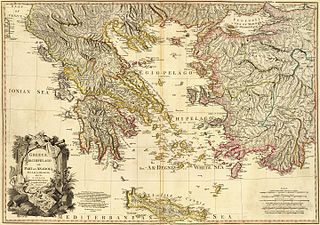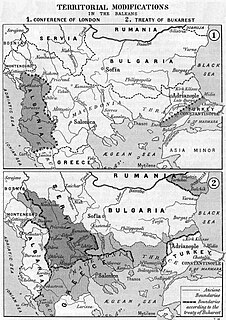 W
WThe Balkan Wars consisted of two conflicts that took place in the Balkan Peninsula in 1912 and 1913. Four Balkan states defeated the Ottoman Empire in the First Balkan War. In the Second Balkan War, Bulgaria fought against all four original combatants of the first war along with facing a surprise attack from Romania from the north. The conflicts ended catastrophically for the Ottoman Empire, which lost the bulk of its territory in Europe. Austria-Hungary, although not a combatant, became relatively weaker as a much enlarged Serbia pushed for union of the South Slavic peoples. The war set the stage for the Balkan crisis of 1914 and thus served as a "prelude to the First World War".
 W
W1912–1913 War Museum is a museum in Ioannina, Greece. The establishment was used as headquarters during the Balkan Wars. In 1950 the establishments were renovated and the museum was founded. The exhibition includes many paintings, armors, swords, guns and many other objects.
 W
WThe League of Balkans was a quadruple alliance formed by a series of bilateral treaties concluded in 1912 between the Eastern Orthodox kingdoms of Greece, Bulgaria, Serbia and Montenegro, and directed against the Ottoman Empire, which at the time still controlled much of Southeastern Europe.
 W
WThe Balkan Wars Memorial Cemetery in Edirne, located at Sarayiçi quarter of Edirne, Turkey, is a memorial burial ground for Ottoman military personnel of the Balkan Wars (1912–1913), who were killed in action during the Siege of Adrianople (1912–13). It was opened to public on January 14, 1994.
 W
WThe Balkan Wars Museum is a museum in Gefyra, west of Thessaloniki, Central Macedonia, Greece, dedicated to the Balkan Wars.
 W
WBanitsa is a deserted former village in Serres regional unit, northern Greece. Its ruins are situated some 15 km north-east of the town of Serres, near the present-day village of Oreini, on the southern slopes of the Vrontous mountains. During the Ottoman period it had a Bulgarian population. The village was destroyed by the Greek Army during the Second Balkan War, and the population migrated to Bulgaria. Its inhabitants settled in Mehomiya, Bachevo, Nevrokop, Sveti Vrach and Novo Delchevo.
 W
WThe participation of Greece in the Balkan Wars of 1912–1913 is one of the most important episodes in modern Greek history, as it allowed the Greek state to almost double its size and achieve most of its present territorial size. It also served as a catalyst of political developments, as it brought to prominence two personalities, whose relationship would dominate the next decade and have long-lasting repercussions for Greece: the Prime Minister Eleftherios Venizelos, and the Army's commander-in-chief, the Crown Prince and later King, Constantine I.
 W
WThe London Conference of 1912–1913, also known as the London Peace Conference or the Conference of the Ambassadors, was an international summit of the six Great Powers of that time convened in December 1912 due to the successes of the Balkan League armies against the Ottoman Empire in the First Balkan War. In particular, the conference intended to arbitrate between the warring powers as to territorial acquisitions, and also to determine the future of Albania, whose independence was proclaimed during the conflict.
 W
WAccording to international reports, a number of massacres of Albanians by the Montenegrin Army, Serbian Army and paramilitaries took place in the Balkan Wars. During the 1912–13 First Balkan War, Serbia and Montenegro committed a number of war crimes against the Albanian population after expelling Ottoman Empire forces from present-day Albania and Kosovo, which were reported by the European, American and Serbian opposition press. Most of the crimes occurred between October 1912 and the summer of 1913. The goal of the forced expulsions and massacres was statistical manipulation before the London Ambassadors Conference to determine the new Balkan borders. According to contemporary accounts, between 20,000 and 25,000 Albanians were killed or died because of hunger and cold during that period. Many of the victims were children, women and the elderly. In addition to the massacres, some civilians had their lips and noses severed.
 W
WPobednik is a monument in the Upper Town of the Belgrade Fortress, built to commemorate Serbia's victory over Ottoman and Austro-Hungarian Empire during the Balkan Wars and the First World War. Cast in 1913, erected in 1928, and standing at 14 metres (46 ft) high, it is one of the most famous works of Ivan Meštrović. It is also one of the most visited tourist attractions in Belgrade and the city's most recognizable landmark.
 W
WThe Report of the International Commission to Inquire into the Causes and Conduct of the Balkan Wars is a document published in Washington D.C. in 1914 by the Carnegie Endowment for International Peace.
 W
WThe Treaty of Constantinople was a treaty between the Ottoman Empire and the Kingdom of Bulgaria signed on 29 September 1913 after the Second Balkan War at the Ottoman capital Constantinople.